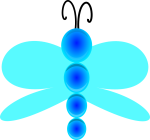The よ sentence ending particle is a common and versatile particle used in Japanese. It is used to emphasize or assert a statement, to give new information or to draw attention to something. Here are some examples of how the よ particle is used:
Emphasizing a Statement:
One of the most common uses of the よ particle is to emphasize or assert a statement. It is often used when the speaker wants to make a point or convey a sense of conviction. For example:
あの店のラーメンは美味しいよ。(Ano mise no raamen wa oishii yo.)
That restaurant’s ramen is really delicious!早く来てよ!(Hayaku kite yo!)
Hurry up and come here!
Giving New Information:
The よ particle can also be used to give new information to the listener. It is often used when the speaker thinks that the listener does not know something important or interesting. For example:
明日はテストだよ。(Ashita wa tesuto da yo.)
Tomorrow is the test, you know.あの人、昨日結婚したよ。(Ano hito, kinou kekkon shita yo.)
That person got married yesterday, you know.
Drawing Attention:
The よ particle can also be used to draw attention to something. It is often used when the speaker wants to emphasize a point or highlight a certain aspect of the conversation. For example:
この本は面白いよ。(Kono hon wa omoshiroi yo.)
This book is really interesting, you know.この景色、きれいだよね。(Kono keshiki, kirei da yo ne.)
This scenery is beautiful, don’t you think?
Softening a Statement:
The よ particle can also be used to soften a statement, making it sound more friendly and approachable. It is often used in conversations between friends or people with close relationships. For example:
あの人、元気だよ。(Ano hito, genki da yo.)
That person is doing well, you know.今日はありがとう、助かったよ。(Kyou wa arigatou, tasukatta yo.)
Thanks for today, you really helped me out.
In conclusion, the よ particle is a versatile particle used in Japanese to emphasize or assert a statement, give new information, draw attention to something, and soften a statement. Its usage can vary depending on the context and relationship between the speaker and listener.


